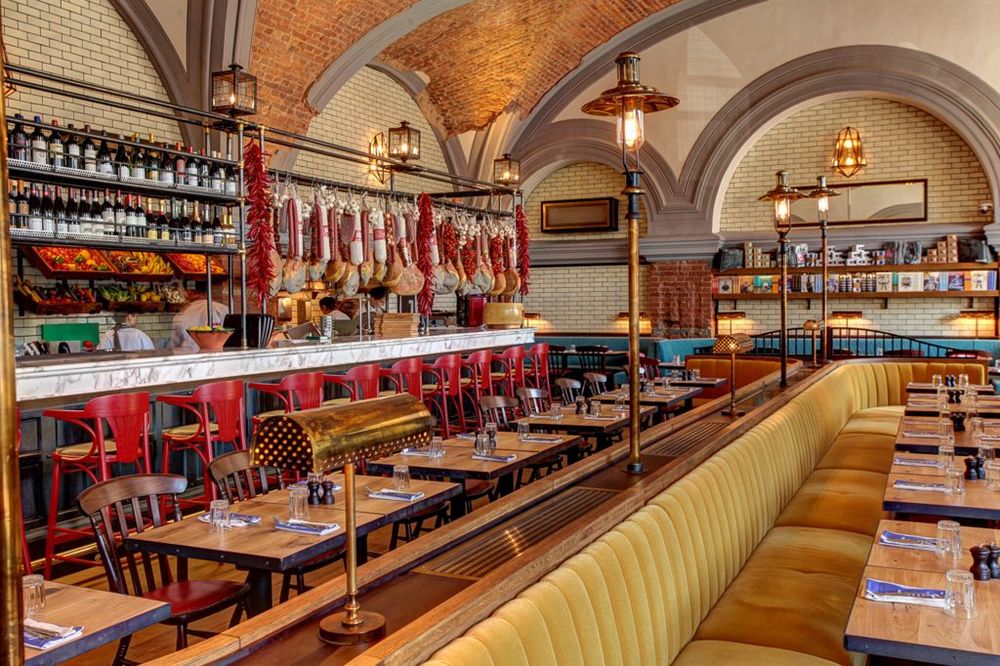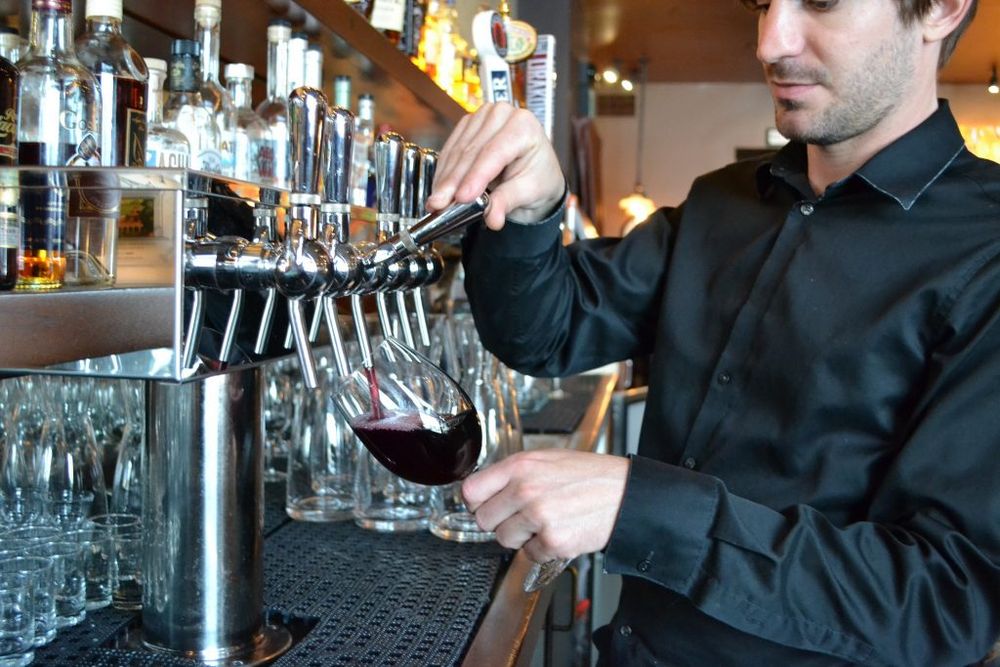Drinks suppliers now have to concentrate as much on the after service they can provide as much on the quality of their range and ability to deliver it in to the on-trade, explains Liberty Wines’ David Gleave MW.
For David Gleave, managing director of Liberty Wines, the role of a drinks supplier as essentially a logistics provider is now a given. You won’t even be allowed to get your hands on anyone’s drinks list if you can’t prove you have a first class distribution and delivery model.
The real work, he stresses, now starts once you have got the wine delivered in to restaurant, bar, pub or hotel.
What has long been a requirement to do business with a major supermarket has now become a must in the on-trade too, says Gleave. Particularly with bigger and national chains.
“When we first started out say 15 years ago, once you had supplied the wine to a restaurant then effectively that was your job done,” he explains. “Whereas with the supermarkets that is when your job really started. It is now the very much the case in the on-trade. That’s been the biggest change.”

Getting wine from its Clapham office to its customers as efficiently as possible is no longer good enough for a drinks supplier. It is how you then help them sell it that counts
It is also where the future battleground between wine and drinks suppliers lies, argues Gleave. Having a comprehensive, quality, well sourced and managed wine and drinks list is also now a given.
What isn’t is an individual supplier’s ability to offer all the value added services, the training, the support, and the know how which is going to really help an outlet or an operator move its offer to the next level.
It’s all about training

Staff from Jamie’s Italian taking part in a Liberty Wines’ training session
If you look at all the innovation taking place across the trade’s national and regional suppliers then it lies in training and service.
“Education is just so important now,” he stresses. “We do huge amounts of staff and customer training.”
But for Gleave it is no longer good enough to just offer WSET-style training. Even though the company has 16 qualified WSET trainers.
“The WSET has done a fantastic job in educating the trade and we have WSET training going on all the time here.”.
For its on-trade customers, however, Liberty Wines needs to be able to go to a different level of training and support.
Yes, the WSET is still a key starting point, but for training and support to be truly effective then it needs to be tailored and adapted to suit the individual needs of a restaurant, bar or chain, explains Gleave.
“That is where the real education in the on-trade needs to be. That is what is going to help them sell more premium wine and encourage their customers to spend a little more on wine,” he adds.
It is why the business introduced last year its own Liberty Wines Academy with its own tailored and customised programme to help individual on-trade customers. The programme is made up of eight different modules, which can be grouped together for a one day course, and is designed to give practical help to front line staff on how to sell wine better.
These include sessions on how to taste wine, how to navigate a wine list navigation, the art of good service, how to store and decant wine, food and wine matching, where the onus is very much on maximising sales. It has already clocked up its 1,000th student from right across the on-trade from Michelin star restaurants through to family restaurants and local gastro pubs.
But Gleave stresses it is very much there to support the WSET programme.
“It is much more focused on how you sell more wine. How our training is relevant to their list and their needs. After all people eating out aren’t always interested in wine, but they are interested in knowing what sort of wine will go with the food they are eating. Our training is all geared around that,” he explains.
Gleave says it is also about understanding the kind of businesses they are working with in the on-trade and looking at ways in which they can help take away “some of their complexities”.
The level of training it has provided the on-trade, be it on or off-site, increased by 40% in 2015. With many operators, like Jamie’s Italian, choosing to use the Liberty Wines head office to do some of that training.
It’s all about the numbers
It is also why Liberty Wines has in the last couple of years started to invest far more in acquiring and analysing real time on-trade data, in partnership with CGA Strategy, that can be used to help customers better understand their own business.
Last year’s breakthrough Premium On-trade Wine Report was Liberty Wine’s first formal wine report. Its own footprint if you like in to the trends and opportunities that exist in the UK on-trade.
Its team of data crunchers and wine analysts are currently working on the 2016 report which should be released to the trade early in September.
But whilst the formal report gives us all in the trade an overview of what is happening across the on-trade, it is what we don’t see that is crucial to Liberty Wines and its own relationships with its customers.
The national and regional data can then be assessed and compared to an individual operator’s own figures to identify areas where they might be out of kilter with what is happening in other outlets across the country. It is that access to data and real insights that gives Liberty Wines the ability to act as a true “business partner” with their customers. And not just another company that can deliver it wine.
It’s all about partnership
It means Liberty Wines can become much more of a business partner to its customers than simply the company that brings them their wine. “We tell our sales people that they are in effect an account manager and to think about their role in that way,” says Gleave.
Clearly being able to offer such a level of support is going to single out Liberty against much of its competition. But Gleave believes it is in everyone’s collective interest to want to raise the overall standards and quality of information that it is in the on-trade.
After all the on-trade is in the immediate firing line of so many factors, driven by the bare fact that we as a nation are all drinking a lot less wine.
“Restaurants can no longer rely on customers coming in and drinking a bottle or even half a bottle of wine per head,” says Gleave. “We all have to work so much harder to engage with them and make wine relevant to them on a night out.But as people drink less we have to get better at what we do.”
It might mean offering more wines by the glass, different sizes of carafe, a more targeted and better thought through drinks and wine lists that talk to customers in a language and with a design they can understand and connect with.

Liberty Wines worked with Jamie’s Italian to design a wine list that engaged better with its customers.
He points, for example, to the work it has done with Jamie’s Italian restaurant chain in helping to bring that he says a bit more “fun” to its list. “It’s not a big list, but it is a list that is designed to help achieve a certain GP throughout.”
The whole area of encouraging and explaining to on-trade customers why working to a cash margin on some wines is actually more profitable and beneficial than always sticking to a set percentage margin. “We have to remember wine is still a relatively small part of their business, even though it brings in a good margin for them. But they also have to be cleverer about they grow their margins and pay their bills.”
It’s all about the bottom line
Take the casual dining sector, says Gleave. Yes, the increase in the number of chains and outlets has been phenomenal, but so is now the competition between them to keep their point of differnce. “They are going to have to start looking at yields per table a lot more. How can they make more money out of the same amount of space in a restaurant. We can play our part in showing how they can make more out of their wine sales.”
Which is why Liberty Wines is investing so much more time in working with restaurants, particularly in the casual dining sector, on getting the most out of the trend towards having much smaller wine lists.
“It is the right way to go. It is good for the customer, but it is also the hardest thing to do,” he stresses. “Designing a short wine list requires a lot of skill.”
Which anyone who has tried to cut a 5,000 word essay down in to 500 words can tell you. Or even master how to write 140 character tweets effectively, admits Gleave.
It puts even more importance on getting that tasting note, the wine descriptor right. “You have got to tell the story about the wine. It can’t just be cut and pasted.”
It’s all about presentation

Draft wine ticks a lot of boxes for both suppliers and on-trade operators, says Gleave
How wines are now being served and presented to customers is also changing fast. Draft wine, for example, is an area that Gleave believes is set for much bigger and better things.
“There is a huge opportunity with draft wine. It makes sense on so many different levels. They are environmental, and sustainable,and reduce costs. But they are also really popular with customers. Bars in Australia are now doing it really well.”
But for all the bells and whistles Gleave is also very clear that Liberty Wines’ bread and butter is getting its logistics and deliveries in to its on-trade customers absolutely spot on. “We have to get our 1,300 wines to our 2,500 customers,” says Gleave.
Which fundamentally is what it is there to do.
- Tomorrow, in part two of our interview, David Gleave looks at the future of the wine industry, and, in particular, the impact on the on-trade following the Brexit vote.































